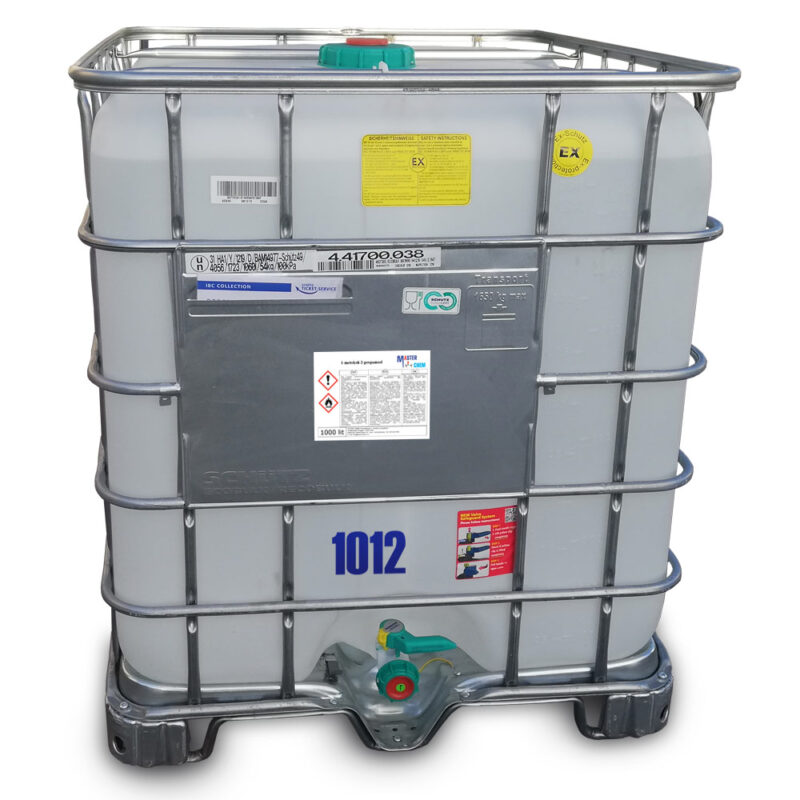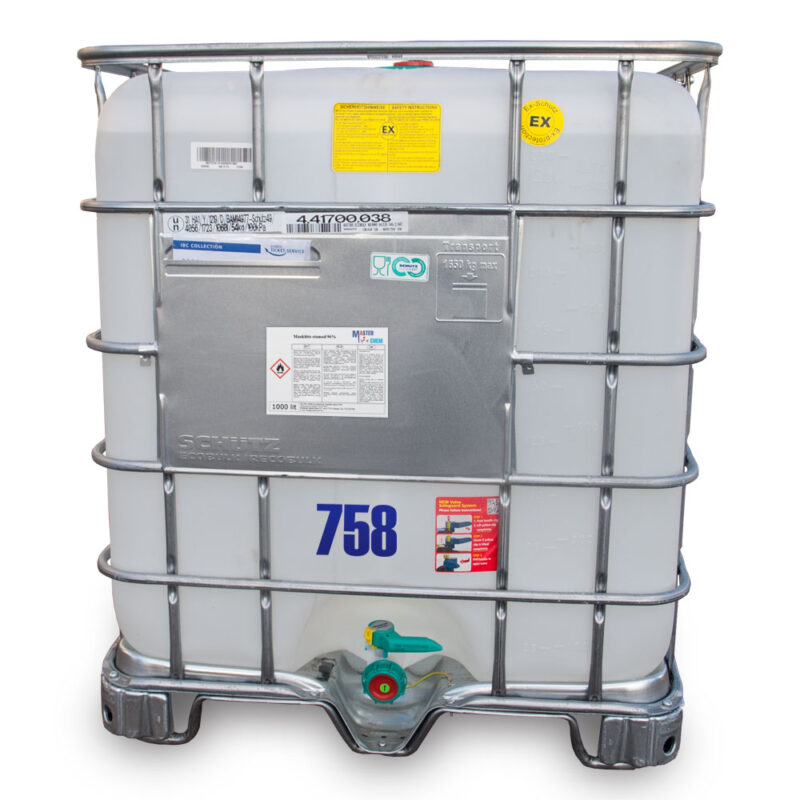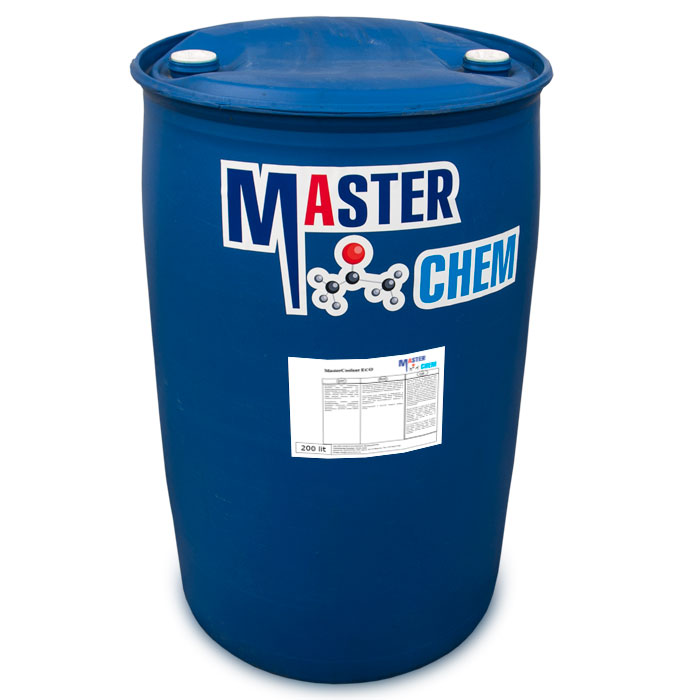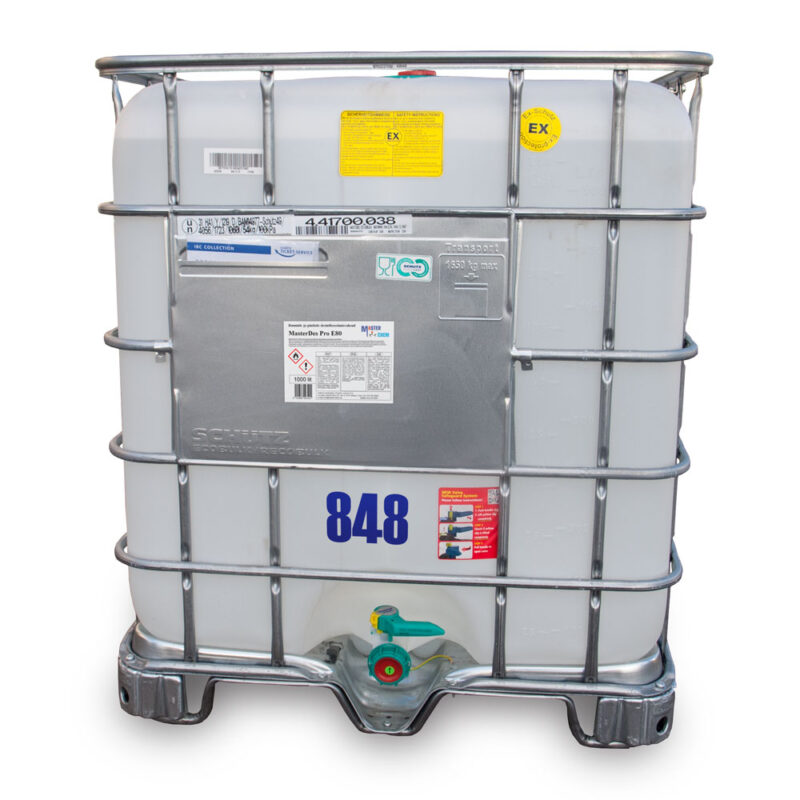1-Methoxy-2-propanol (CAS 107-98-2)
1-Methoxy-2-propanol (CAS 107-98-2)
Other names: 1-methoxy-2-propanol, methoxypropanol, propylene glycol monomethyl ether
Description:
Methoxypropanol is a colorless, water-miscible liquid with a mild alcohol smell and medium volatility. Methoxypropanol mixes well with water and other organic solvents, dissolves many organic substances well, methoxypropanol can act as a substitute for many glycols (E-series).
Methoxypropanol is used as a solvent for printing inks: it provides good solubility for a wide range of resins, including acrylic, epoxy, alkyd, polyester, nitrocellulose and polyurethane.
CAS: 107-98-2
Acetone (CAS 67-64-1)
Other names: Acetone, Dimethyl ketone, Dimethyl carbonyl, β-Ketopropane, Propanone, 2-Propanone, Dimethyl formaldehyde, Pyroacetic spirit (archaic), Ketone propane.
Acetone is miscible with water and serves as an important solvent in its own right, typically for cleaning purposes in laboratories. About 6.7 million tonnes were produced worldwide in 2010, mainly for use as a solvent and production of methyl methacrylate and bisphenol A.
CAS: 67-64-1
Antifreeze/coolant longlife – 38°C
Ready-to-use coolant for vehicles is intended for use in all types of modern cooling systems, as specified by the vehicle manufacturer. Protects the cooling system at temperatures above -38°C.
Butyl acetate (CAS 123-86-4)
Other names: Butyl acetate, butyl ethanoate, n-Butyl acetate, acetic acid, n-butyl ester, butile.
Butyl acetate – is a volatile and transparent fluid without color or with a slight yellowish tint, with a specific fruity smell. Organic substance of the ester class, organic solvent. Butyl acetate is slightly soluble in water; it is mixed with organic solvents and vegetable oils. It dissolves resins and fats well. Butyl acetate is a good solvent for nitrocellulose, chlorinated rubber, glyptal resins and other film-forming substances used in the paint industry. It is part of many multicomponent solvents, such as solvents 646 and 648.
Chemically, it is a typical representative of esters. It reacts with acids, alkalis, hydrogen, alcohols, hydroxylamine, hydrazine, ORGANOMETALLIC compounds. With ammonia, it forms amides. When heated, it decomposes with the release of gaseous and combustible hydrocarbons-butenes. Practically does not react with oxidizing agents.
Butyl glycol BG (CAS 111-76-2)
2-Butoxyethan-1-ol, 2-Butoxyethanol, Butyl cellosolve, Butyl glycol, Butyl monoether glycol, EGBE (ethylene glycol monobutyl ether), Dowanol EB, Bane-Clene, Eastman EB solvent, BH-33, industrial cleaner, Solvaset, 2-BE, EGMBE, Butyl oxitol, Ektasolve, Jeffersol EB
Description:
Butyl glycol is a chemical compound with the formula C6H14O2, is a glycol ether. A low-volatile, high-boiling, low-odor liquid is used as a solvent and synthesis feedstock. Excellent auxiliary solvent in aqueous LCM (water-based paints). Soluble in water, alcohols, glycols, diethyl ether, acetone, chloroform and other organic solvents.
Butyl glycol BG (CAS 111-76-2)
2-Butoxyethan-1-ol, 2-Butoxyethanol, Butyl cellosolve, Butyl glycol, Butyl monoether glycol, EGBE (ethylene glycol monobutyl ether), Dowanol EB, Bane-Clene, Eastman EB solvent, BH-33, industrial cleaner, Solvaset, 2-BE, EGMBE, Butyl oxitol, Ektasolve, Jeffersol EB
Description:
Butyl glycol is a chemical compound with the formula C6H14O2, is a glycol ether. A low-volatile, high-boiling, low-odor liquid is used as a solvent and synthesis feedstock. Excellent auxiliary solvent in aqueous LCM (water-based paints). Soluble in water, alcohols, glycols, diethyl ether, acetone, chloroform and other organic solvents.
Caustic soda (CAS 1310-73-2)
Caustic soda, sodium hydroxide ja lye CAS 1310-73-2
Caustic soda is the most common alkali, with the chemical formula NaOH.
Soapstone is a product of chemical synthesis, such a substance does not exist in nature.
The dissolution of fats and proteins is an important property of soapstone, which is used in industry and also in household cleaning products.
EC 215-185-5
INDEX 011-002-00-6
Denatonium benzoate (CAS 3734-33-6)
Other names: denatonium, denatonium benzoate, bitterant-b, bitter+plus, bitrex, bitterant.
Denatonium, usually available as denatonium benzoate (under trade names such as BITTERANT-b, BITTER+PLUS, Bitrex or Aversion) and as denatonium saccharide (BITTERANT-s), is the most bitter chemical compound known, with bitterness thresholds of 0.05 ppm for the benzoate and 0.01 ppm for the saccharide. It was discovered in 1958 during research on local anesthetics by MacFarlan Smith of Edinburgh, Scotland, and registered under the trademark Bitrex
CAS 3734-33-6
Denatured spirit (CAS 64-17-5)
Denatured Alcohol or ethanol or ethyl alcohol (also alcohol) or methylcarbinol (of the formula CH 3 CH 2 OH) is the best known alcohol. It is a colorless liquid under normal conditions. We offer only denatured spirits.
CAS: 64-17-5
Dipropylene glycol monomethyl ether Dowanol DMP (CAS 34590-94-8)
Dipropylene glycol monomethyl ether Dowanol DMP (CAS 34590-94-8)
Di(propylene glycol) methyl ether is an organic solvent with a variety of industrial and commercial uses. It finds use as a less volatile alternative to propylene glycol methyl ether and other glycol ethers. The commercial product is typically a mixture of four isomers.
Ester-aldehyde fraction EAF 89%
It is used in domestic heating or ground heating systems. MasterChem offers different freezing temperatures and different packages. The basic raw material for liquids. It is also used in printing houses, cleaning of printing machines, in paint and varnish industry for production of stains and dyes, in cleaning of equipment.
Ethyl acetate (CAS 141-78-6)
Other names: Ethyl acetate, ethyl ethanoate
Description:
Ethyl acetate is an ethyl etheric acid in the form of a combustible colorless volatile liquid substance with a sharp smell of fruit. There are no mechanical impurities. It is a moderately polar solvent product with the properties of esters. The solution is supplied in methylcarbinol, ethyl ether, benzene, methylene chloride, methylbenzene and some other organic solvents. In water, the dissolution is weaker. Ethyl acetate has a solvent effect on cellulose esters, oil-based resin lacquers, fats and waxes.
Production on an industrial scale occurs during the reaction of ethanol and acetic acid. It is also possible to process ethanol with carbomethylene or synthesize it from acetic aldehyde in the presence of an aluminum alkoxide catalyst.
CAS 141-78-6
Ethyl alcohol (denaturated) (CAS 64-17-5)
Application and use:
Ethyl alcohol is used in:
– Pharmacy as an external antiseptic for the disinfection of hands and surgical instruments
– perfumes for the production of cosmetics, as the main component of aerosols, perfumes, colognes, and is also part of such cosmetics as shampoos, shower gels, toothpastes
– In auto repair shops, this liquid is used for degreasing a metal surface, for painting a body, cleaning aggregates (ethyl alcohol EA8099)
– for domestic needs, it is space heating, cooking, detergent and a hand sanitizer (for example ethyl alcohol EA8099), to clean the surface of grease and oils
– c, non-freezing fluid in the heating systems of earthen loops, we have presented products with different freezing temperatures and different packaging
– the chemical industry is a solvent, it is used as a raw material for the production of certain chemicals, a component in the production of glass cleaning liquids for automobiles (we have products with different freezing temperatures and different packaging).
– in the printing industry as a solvent for washing equipment. We offer both a pure product (ethyl alcohol EA8099) and as a mixture where 90% ethanol and 10% ethyl acetate is a solvent product EE-9010.
– in the paint and varnish industry is used for the production of stains, dyes,
solvents for flushing equipment.
– in the glass industry for degreasing surfaces
– in the leather industry, this is an essential element in tanning leather
– in electronics: in the manufacture of microcircuits, as a necessary substance for the maintenance of equipment (for example, for cleaning it).
Tip: Store the product at a temperature between 0 °C and 35 °C and do not expose it to direct sunlight.
Properties:
Density: at 20 degrees C – 0.78 g/cm3 +-0.01
Color – colorless liquid
Hand sanitizer MasterGel E80
MasterGel E80 is a universal hand sanitizer. Contains glycerin to prevent dry skin. It is a mixture of ethanol, glycerin and propylene glycol.
Actively disinfects, deodorizes and cleans and does not need to be rinsed.
Due to its properties, MasterGel E80 is especially suitable for hospitals, public spaces, gyms and social gatherings. Suitable for both household and professional use.
Using:
• Hygienic hand antiseptic:
Apply 3 ml of MasterChem E80 to hands and massage into hands for 30 seconds.
• Surgical hand antiseptic:
Rub MasterChem E80 into hands 2 times, 3-6 ml each. (It is important to make sure that the entire surface to be treated is covered with the solution). Rubbing takes 1.5 minutes. Work both hands and forearms.
Use biocide safely! Be sure to read the attached information before use!
Certificate of registration of biocidal product No. 2121/20
Hydrogen peroxide 50% (CAS 7722-84-1)
CAS № 7722-84-1
Hydrogen peroxide 50%
– colorless liquid with a metallic taste, easily soluble in water, alcohol and ether
Application
-Hydrogen peroxide becomes an excellent agent for disinfecting water in swimming pools, to combat algae and water bloom
-applied as an effective bleaching agent for cotton, wool, textiles, furs, paper, artificial and synthetic fibers in the textile, pulp and paper and light industries
-Capable of spontaneous decomposition into water and oxygen, mixes up with water in any ratio. – properties as an antiseptic, hemostatic and disinfectant make it possible to use it in cosmetics, electronics, food, pharmaceutical, medical and other industries. In medicine, they are used mainly for healing wounds and scratches. – the food industry is used to disinfect equipment.
MasterChem IE80 disinfectant
MasterChem IE80 disinfectant for rooms and surfaces
MasterChem IE80 is a universal disinfectant for surfaces and premises. It is a new product developed with a special formula to fight surface viruses and bacteria.
MasterChem offers universal disinfectants for objects and surfaces. Actively disinfects, deodorizes, cleans and removes grease, does not foam, does not require rinsing.
MasterChem IE80 provides comprehensive protection against major fungi, mold and infection-causing bacteria.
Due to its properties, MasterChem IE80 is especially suitable for hospitals, public spaces, gyms and social gatherings. For general and professional use.


MasterChlor 5000 (Sodium hypochlorite 0,5%)
MasterChlor 5000 (Sodium hypochlorite 0,5%)
Disinfection from COVID-19 should be done with 0.1% sodium hypochloride solution (WHO and Health Department recommendation)
MasterCoolant ECO -20°C ecological heat carrier (coolant)
Environmentally friendly coolant for heating systems, contains no harmful to human body ethylene glycol. Made on the basis of non-toxic propylene glycol, and therefore particularly suitable for heating of houses and apartments. Not for use in heating systems with aluminium radiators. MasterCoolant ECO -20°C contains propylene glycol, especially demineralized water, corrosion additives, antifoam agents, stabilizing additives and package of high quality, multifunctional additives.
MasterCoolant ECO -40°C ecological heat carrier (coolant)
Environmentally friendly coolant for heating systems, contains no harmful to human body ethylene glycol. Made on the basis of non-toxic propylene glycol, and therefore particularly suitable for heating of houses and apartments. Not for use in heating systems with aluminium radiators. MasterCoolant ECO -40°C contains propylene glycol, especially demineralized water, corrosion additives, antifoam agents, stabilizing additives and package of high quality, multifunctional additives.
MasterCoolant ECO CONCENTRATE ecological heat carrier (coolant)
Environmentally friendly coolant for heating, conditioning and ventilation systems, contains no harmful to human body ethylene glycol. Made on the basis of non-toxic propylene glycol, and therefore particularly suitable for heating of houses and apartments. Protects the system from freezing. Extends the life of heating equipment and protects it against freezing.
MasterCoolant Nitrite Free – 38°C yellow
Trade name: Antifreeze MasterCoolant Nitrite Free – 38°C yellow
MasterCoolant EXTRA LONGLIFE – 38 ° C is a high performance, extended life coolant formulated for optimal heat transfer and long term protection of the cooling systems of stationary gas engines and for most types of engines used in construction, quarry, agricultural, railway and marine equipment.
Uses carboxylate additive technology developed for highly effective system protection with maximum uptime in a wide range of operating conditions.
Distinctive features
• Advanced non-depleting corrosion inhibitor provides long service life with minimal maintenance and trouble-free engine operation
• Designed for a mixed fleet of vehicles and is designed for use with replacement intervals of more than 650,000 km in trucks and buses and 32,000 hours in stationary engines
• Provides reliability and protection against corrosion of thermostats, radiators, water pumps and other vulnerable parts of the cooling system
• Highly effective formulation without silicates and phosphates provides stable working properties when diluted in hard water
• Protects modern engines from high temperature corrosion, reducing maintenance time, costs, downtime and waste.
Conforms to standards: ASTM D3306, ASTM D4985, ASTM D6210, BS 6580 (2010), MB-Approval 326.3, WSS-M97B44-D, RP 364, VCS 418-0001
Coolant MasterCoolant Nitrite Free is suitable for use in the following engines:
• Engines for General Motors vehicles after 1995
• Engines for Chrysler cars after 2001
• Ford engines after 2003
• Stationary diesel engines Deutz
• Diesel engines of Hino trucks
• Diesel engines of Isuzu trucks
• Diesel engines for Kobelco construction equipment
• Diesel engines for Komatsu construction equipment
• Engines Navistar ™ MAXXFORCE
• Diesel engines of Scania trucks
• Diesel engines for Volvo construction equipment
• Diesel engines of Volvo and Mack trucks
• Stationary Wärtsilä diesel engines
• European OEM heavy duty engines requiring phosphate and nitrite free formulations
• Japanese OEM heavy-duty engines requiring silicate-free formulations
Properties:
Colour: yellow
Product type: Ready to use
Country of origin: Estonia
Freezing point -38 ° C
Boiling point (° C): 108 ° C
Density at 20 ° C: 1,078 g / cm 3
Recommended storage temperature minimum: 0 C maximum: 30 C
pH (ASTM D-1119): 8.6
Shelf life 36 months.
Code Master EWS-55i3y
MasterDes Pro E80 disinfectant
MasterDes Pro E80 room and surface disinfectant
MasterDes Pro E80 is a universal disinfectant for surfaces and rooms. It is a new product developed according to a special formula to fight viruses and bacteria on the surface.
MasterChem offers versatile disinfectants for objects and surfaces. Actively disinfects, deodorizes, cleans and removes fat without foaming and does not need to be rinsed.
MasterDes Pro E80 provides comprehensive protection against the main fungi, molds and bacteria that cause infections.
Due to its properties, the MasterDes Pro E80 is particularly suitable for hospitals, public places, gyms and social gatherings. For general consumer and professional use.


Methyl alcohol (methanol) (CAS 67-56-1)
Other names: Carbinol, Columbian spirits, Hydroxymethane, Methyl alcohol, Methyl hydrate, Methyl hydroxide, Methylic alcohol, Methylol, Pyroligneous spirit, Wood alcohol, Wood naphtha, Wood spirit
Methanol, also known as methyl alcohol among others, is a chemical with the formula CH3OH (often abbreviated MeOH). Methanol acquired the name wood alcohol because it was once produced chiefly as a byproduct of the destructive distillation of wood. Today, industrial methanol is produced in a catalytic process directly from carbon monoxide, carbon dioxide, and hydrogen.
CAS: 67-56-1

































